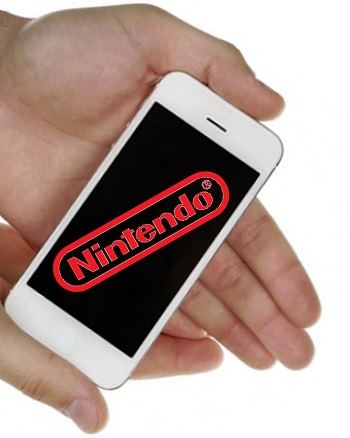This came as good news for the Japanese tech giant that had been holding onto its policy for only console games.
Nintendo recently announced that the first mobile game it ever launched managed to draw over one million users within the span of three days that followed its initial release.
The first mobile gaming experience offered by Nintendo was in the form of its “Miitomo” app.
The Miitomo mobile game is an interactive experience that makes it possible for users to be able to design their own Mii avatars. It released this app in order to be able to position itself to better compete with its rivals. Through the use of this mobile app, smartphone users are able to change the outfit worn by their avatar through in-app purchases. They can also use their avatars to interact with those that have been created by friends or other mobile application users.
Within the mobile game, the avatars also interact with the user him/herself and share the answer with friends.
 For example, the avatar may ask one of the players of the mobile games what they did over the weekend or “What is your favorite food?” When the player answers, it is shared with the other characters selected by that player.
For example, the avatar may ask one of the players of the mobile games what they did over the weekend or “What is your favorite food?” When the player answers, it is shared with the other characters selected by that player.
The game app was originally launched in Japan on a Thursday and by the following Saturday it had already broken the one million user mark, according to a company spokesperson. At the time of the writing of this article, she had also said that there weren’t any updated figures to release. That said, following a national holiday on the weekend of the achievement of the first million users, the stock markets opened on the Tuesday to send Nintendo’s shares upward by a striking 8.18 percent.
The official Twitter account for the mobile game stated that Nintendo had been quite surprised with the number of players who were instantly attracted to the app. As Sony and Microsoft continued to outpace Nintendo’s sales in terms of consoles and related games, the three giants have now moved into the app sphere for mobile devices where they are competing with thousands of other developers with cheap and even entirely free games.
Consumers who use their smartphones for researching products and making purchases shop differently.
Consumers who regularly participate in mobile shopping have a tendency to prefer products with which they have already become familiar and that they purchase on a regular basis, according to American research.
The study was conducted by a team of researchers from the Kellogg School of Management at Northwestern University.
The research also determined that mobile shopping is considered to be a solid way for boosting consumer loyalty – also referred to as “stickiness” – among customers, especially when it comes to people who are purchasing in small volumes. The study discovered that this is because m-commerce encourages customers to purchase on a more frequent basis and to boost the size of the orders they place. The study was held by marketing PhD candidate Jen-Hui Wang from the Kellogg School, as well as marketing professor from the same school, Lakshman Krishnamurthi, as well as Edward Malthouse from the Medill School of Journalism at Northwestern.
This research was conducted by analyzing online and mobile shopping data from 13 American locations.
 More specifically, the data analyzed was from an online grocery retailer that operates within these 13 U.S. locations. The data was broken down into two separate periods. The first was from June 2012 through October 2012. During that time , an ad campaign was launched by the grocery retailer for its mobile app. The time span was from November 2012 through June 2013.
More specifically, the data analyzed was from an online grocery retailer that operates within these 13 U.S. locations. The data was broken down into two separate periods. The first was from June 2012 through October 2012. During that time , an ad campaign was launched by the grocery retailer for its mobile app. The time span was from November 2012 through June 2013.
What was determined was that PC users during the first data set displayed different behaviors than those in the second period of time who had started using the mobile app. The shoppers whose total spending was smaller than the average value within the first span of time boosted their average order size when they started buying over mobile commerce than they had when they were buying over e-commerce.
On the side of consumers who spent more than the average, their size orders didn’t seem to change from e-commerce to mobile shopping. However, when they started buying over mobile apps, they started to make their orders more frequently than they had on their PCs.
 For example, the avatar may ask one of the players of the mobile games what they did over the weekend or “What is your favorite food?” When the player answers, it is shared with the other characters selected by that player.
For example, the avatar may ask one of the players of the mobile games what they did over the weekend or “What is your favorite food?” When the player answers, it is shared with the other characters selected by that player.
 More specifically, the data analyzed was from an online grocery retailer that operates within these 13 U.S. locations. The data was broken down into two separate periods. The first was from June 2012 through October 2012. During that time , an ad campaign was launched by the grocery retailer for its mobile app. The time span was from November 2012 through June 2013.
More specifically, the data analyzed was from an online grocery retailer that operates within these 13 U.S. locations. The data was broken down into two separate periods. The first was from June 2012 through October 2012. During that time , an ad campaign was launched by the grocery retailer for its mobile app. The time span was from November 2012 through June 2013.